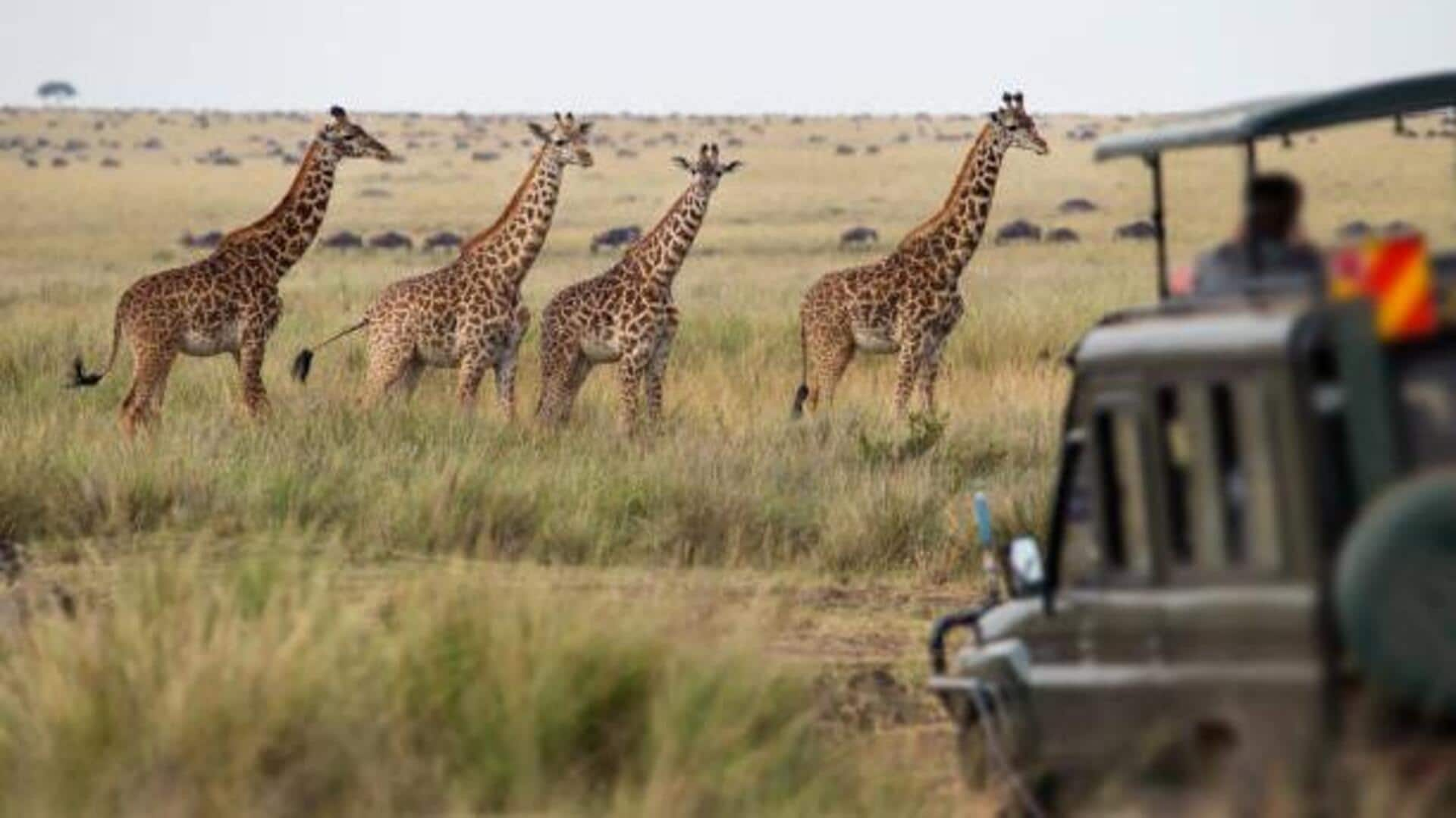
Wildlife photography: Tips for stunning safari shots
What's the story
Capturing the essence of Africa's wildlife through the lens is a perfect combination of skill, patience, and understanding of the surroundings. Be it a seasoned photographer or a beginner, knowing how to approach your subject can make all the difference. Here are some practical tips to help you take stunning safari shots that would truly do justice to the beauty and diversity of African wildlife.
Light & timing
Understanding light and timing
The quality of light can make or break your photographs. Early morning and late afternoon are commonly called the golden hours because of the soft, warm light they offer. Also, at these times, animals are more active, giving you the chance to take some dynamic shots. Don't shoot in harsh midday sun as it can create unwanted shadows and overexposed images.
Equipment choice
Choosing the right equipment
Selecting appropriate equipment is critical for wildlife photography. You need a camera with a fast shutter speed to capture moving subjects without blur. A telephoto lens is also important to be able to photograph animals from a distance without disturbing them. You may also consider using a tripod or monopod for stability when using heavy lenses.
Composition techniques
Mastering composition techniques
Composition is key to taking aesthetically pleasing photographs. The rule of thirds is a basic technique where you split your frame into nine equal parts and position points of interest along these lines or intersections. Leading lines can direct a viewer's eyes through an image, whereas framing with elements such as trees or rocks adds depth.
Patience & observation
Practicing patience and observation
Wildlife photography requires patience. Animals may not always be present or active as soon as you reach a place. Spend time observing their behavior patterns; this will help you anticipate their movements and capture something unique, like interactions between species or playful antics among the young ones.
Wildlife ethics
Respecting wildlife ethics
Respecting wildlife ethics keeps photographers safe and ensures minimal disruption to animals' natural behavior on safari. Whether it's elephants roaming the savannas or hippos lounging by sunlit riverbanks, maintaining a safe distance is key. Avoiding loud conversations and other disruptive noises near delicate habitats allows creatures to live peacefully in their natural surroundings, offering a chance to experience nature's wonders respectfully each day.